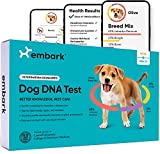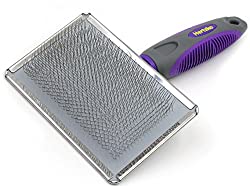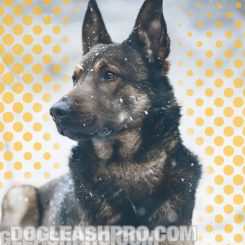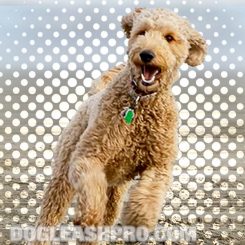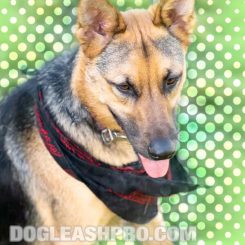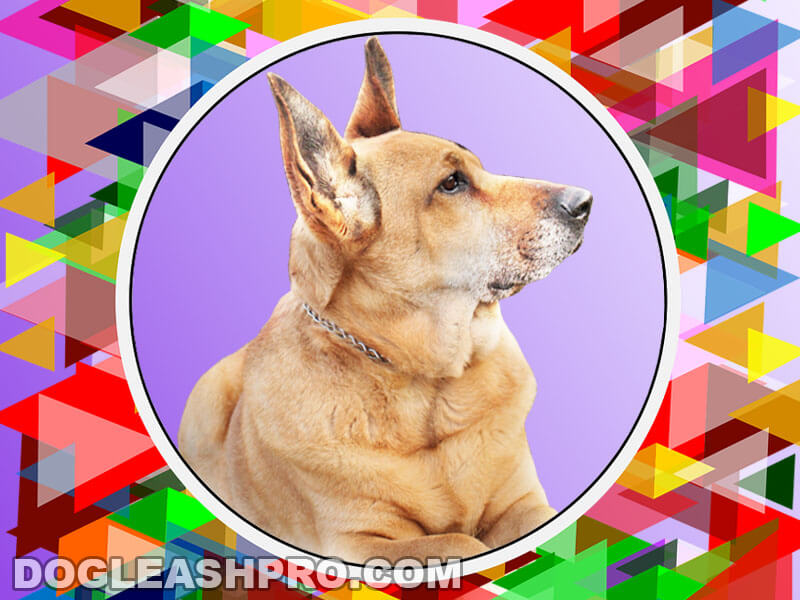
While German Shepherds are one of the most recognizable dog breeds, very few know that Blonde German Shepherds exist. If you’ve ever seen a Blonde German Shepherd, you already know how beautiful and gorgeous he is. But are light-colored coats in GSD breed standard? What’s causing the Blonde coat color?
In this comprehensive guide, we’ll discuss everything you need to know about the Blonde German Shepherd including their genetics, health issues, temperament, grooming and exercise requirements, dietary needs, and ideal living conditions.
After reading this, you’ll know whether the Blonde GSD is the right dog for you. If you’re still interested, we’ve listed a few breeders you can reach out to. For now, let’s first start with a brief overview of the Blonde GSD.
Table of Contents
Blonde German Shepherd: Breed overview
The Blonde German Sheperd is an unusual color among German Shepherds. The typical color we see is the black and tan combination but it is possible to have a light-colored German Shepherd.
| Blonde German Shepherd | |
| Other Names | Light German Shepherd, Blond German Shepherd |
| Purity | Purebred dog |
| Purpose | Companion dog |
| AKC Recognition | No |
| Size | Large |
| Weight | 50-100 pounds |
| Height | 22-26 inches |
| Coat Colors | Blonde, Light yellow |
| Child Friendliness | High |
| Canine Friendliness | Low |
| Training Difficulty | Easy |
| Grooming Upkeep | Moderate |
| Exercise Needs | High |
| Health | Moderate |
| Lifespan | 9-13 years |
| Puppy Costs | $500 to $2,000 |
Are there Blonde German Shepherds?
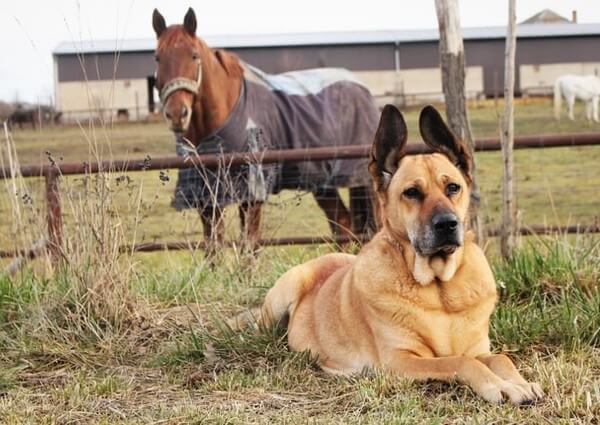
Yes, Blonde German Shepard does exist, but it is very rare. The coat color is considered a fault by most breeders and it is difficult to produce such an offspring.
What is a Blonde German Shepherd?

A golden Blonde German Shepherd has a light cream or yellowish coat that can cover its entire body. The color is retained until adulthood. A Blonde or golden color German Shepherd shares the same physical traits as any German Shepherd except for its color.
Some puppies, however, can be born entirely with a light coat which some may mistake for a golden-colored German Shepherd, but their color may change dramatically as they mature and appear as any typical German Shepherd with a black and tan coat.
You may like: German Shepherd Greyhound Mix (Complete Guide)
Is Blonde GSD the same as Albino GSD?
No, Blonde GSD is not the same as Albino GSD. These two German Shepherds do not share the same genes that determine their color.
Albino German Shepherds are completely white and have no color pigmentation whatsoever. They also have pink noses and eyelids which are the characteristics of most animals with albinism.
Blonde German Shepherds, on the other hand, have Blonde coats that are the dilution of the gene responsible for the red color.
Blonde German Shepherd genetics: What genetic factors cause the Blonde GSD coat color?
The pheomelanin pigment, which is responsible for the red color, is the determining factor for the Blonde German Shepherd dog.
It is still not clearly explained by geneticists how the Blonde pigment is achieved, but it is believed that a recessive gene may attach itself to the gene for the red color to dilute it into cream, thereby producing a light Blonde German Shepherd.
What GSD coat combinations will breed the Blonde coat coloring?
There are only two pigments that determine a dog’s coat color. They are the following:
- Eumelanin: black pigment.
- Pheomelanin: Red pigment.
Genes for pigments are often diluted to produce different shades. Black can be diluted into liver color, while red can be diluted into cream or yellow.
There are no clear explanations as to how the Blonde color can be achieved, but pheomelanin certainly plays a major role in the Blonde color together with a recessive gene. A liver-colored dog that carries a recessive gene and one that has the pheomelanin can produce a blond-colored dog.
Are Blonde German Shepherds rare?
Yes, Blonde German Shepherds are rare because the probability of combining two unusual genetic mutations to produce an all Blonde German Shepherd is very low. Breeders are also hesitant to breed rare German Shepherd coat colors since they are not acceptable in dog shows.
RECOMMENDED: German Shepherd Poodle Mix (Shepadoodle Complete Guide)
Are Blonde German Shepherds purebred?
Yes, Blonde German Shepherds are still considered purebred since they share the same characteristics as any German Shepherd.
There are, however, mixed breeds, like the Golden Shepherd, which is a cross of the German Shepherd and the Golden Retriever, that may have the same appearance as the Blonde German Shepherd.
If you bought your mixed dog breed from a shelter or rescue center and do not know what their exact breeds are, it’s a good idea to find out so you’re also aware of what health issues they are predisposed to. We highly recommend using a doggy DNA test to find out.
Many mixed breed owners use the Embark dog DNA test because it provides both breed identification and health detection:
Is Blonde German Shepherd recognized by AKC?
No, Blonde German Shepherd is not recognized by AKC. The American Kennel Club (AKC) does not officially allow Blonde German Shepherds in their confirmation events. However, they are recognized as purebreds and can still participate in other events for agility or obedience competitions.
Blonde GSD coat colors, markings, or patterns
Blonde German Shepherds are mostly double-coated with an outer layer that could be short, medium, or long. Some long-haired German Shepherds may not have an undercoat.
The inner coat could be mostly white or light-colored. The outer coat could be a light yellow color with white markings around the face, neck, legs, and chest.
Blonde and black German Shepherd
A rare color that can be described as having a base coat of black accentuated with Blonde or light yellow markings.
Blonde sable German Shepherd
Instead of having dark tips at the end of its coat, the Blonde Sable German Shepherd has creamish to light yellowish tips.
Want more information? Sable German Shepherd (Complete Guide)
Blonde long haired German Shepherd
German Shepherds with long hair are uncommon making the Blonde and long-haired doubly rare. Their coats are usually two or more inches longer than the short-coated GSDs. The fur around their ears and legs is denser which makes them appear like a fluffy Blonde German Shepherd.
Blonde German Shephard size, height, and weight
German Shepherds will reach their full height at around 18 months of age and males are slightly larger than females. Below is a rough estimate of their growth chart.
Blonde German Shepherd growth chart
| Age | Height (Males) | Weight (Males) | Height (Females) | Weight (Females) |
| 3 months | 9 – 11 inches | 22 – 30 pounds | 8 – 10 inches | 17 – 25 pounds |
| 6 months | 16 – 18 inches | 49 – 58 pounds | 15 – 17 inches | 44 – 50 pounds |
| 9 months | 21 – 23 inches | 64 – 70 pounds | 19 – 21 inches | 55 – 60 pounds |
| 12 months | 22 – 24 inches | 71 – 75 pounds | 20 – 22 inches | 60 – 64 pounds |
| 18 months | 23 – 25 inches | 76 – 100 pounds | 21 – 22 inches | 65 – 90 pounds |
You may be interested in: German Shepherd Teething Stages, Age & Timeline of Baby Teeth
Blonde German Shepherd temperament and personality
German Shepherds, in general, are loyal, courageous, alert, and focused and Blonde German Shepherds are no different. They are hardworking and excel very well when they have a job to do. But, they can also be sensitive and might be prone to separation anxiety if they’re left alone for too long.
Do Blonde German Shepherds make great family pets?
Yes, Blonde German Shepherds do make great family companions. In fact, German Shepherds are known to be protectors of their human families.
Early socialization with small children can make your canine companion more at ease and well-mannered as he matures. They are, however, aloof with other animals they are not familiar with, so they should be exposed as much as possible to new environments to tame this tendency.
Blond German Shepherd training
This breed is highly intelligent so training them should be easy. German Shepherds are known for their great work ethic. They take pride in performing their duties as long as they are regularly trained and mentally stimulated. Not providing enough activities could lead to excessive barking or continuous digging in the yard.
Blonde German Shepherd exercise requirement
An adult German Shepherd would need at least 90 minutes of daily exercise. Running or jogging are ideal activities since these are highly active dogs. Not giving enough activity would trigger boredom and anxiety that could lead to destructive or aggressive behaviors.
Many owners with a backyard allow their Blonde German Shepherds to roam around freely during the day. This provides their Blonde GSDs the opportunity to play and run around. If you also allow your furry friends to play in the backyard, make sure your yard is fully fenced.
Some towns or counties have zoning laws that prohibit physical fences so many dog owners have chosen to install a wireless dog fence in order to keep their four-legged friends safe and prevent them from becoming the next Harry Houdini.
Before you get a wireless dog fence, we highly recommend installing an electronic dog door first. Electronic dog doors are just like any other pet doors, except with more safety functions. You can program and customize curfew hours so that your pups can enjoy the outdoors during the day while staying safe indoors at night.
Many dog owners who have an electronic dog door reported that there are fewer interruptions throughout the day because they don’t need to get up from whatever they’re doing to open and close the door for their canine family members.
Blonde GSD living conditions
German Shepherds are well-suited to live in most living conditions provided that they are given enough exercise every day to burn off their energy.
Blonde German Shephard grooming and cleaning
German Shepherds have thick coats that need to be groomed regularly. Brushing their neck down to their tail with a slicker brush will help remove any excess hairs and help distribute natural oils throughout their body.
Bathing should be done sparingly to avoid skin dryness and to let the natural oils do their work. When it is time for bathing, be sure to use a dog shampoo that will not only clean your dog’s skin and coat but also keep their skin and coat healthy and moisturized.
Ears should also be checked regularly for any infections.
When it comes to cleaning your furry friend’s teeth, their teeth should be brushed two to three times a week with dog-friendly toothpaste or cleaned with disposable dental wipes.
| Grooming Needs | Frequency |
| Brushing | Daily. |
| Bathing | Once a month. |
| Ear cleaning | Weekly. |
| Nail trimming | As needed. |
| Teeth brushing | 2-3 times a week. |
Is a Blonde German Shepherd hypoallergenic?
No, Blonde German Shepherds are not hypoallergenic. They shed all year round and shed heavily twice a year during spring and fall.
Blond German Shepherd food and diet
Depending on his activity level, age, and size, an adult German Shepherd would need at least 2 cups of dog kibble daily. It is recommended to spread it into two meals to prevent bloating and stomach torsion, which most German Shepherds are prone to.
RECOMMENDED: Can Dogs Eat Mushrooms?
Blonde German Shepherd health issues
German Shepherds are one of the healthiest dog breeds. However, they can also be prone to some health issues that you might want to look out for.
1. Hip Dysplasia
Large dogs are most susceptible to hip dysplasia and it’s when the hip joints are loosened or not properly aligned.
2. Gastric Dilatation-Volvulus (GDV)
Also known as bloating, this condition happens when the stomach expands with gas that can cause it to twist.
3. Canine Degenerative Myelopathy
Canine degenerative myelopathy is a degenerative disease that affects the spinal cord and can affect your dog’s mobility.
4. Hypothyroidism
A condition when there are not enough thyroid hormones produced which causes lethargy, weight gain, and hair loss.
5. Osteoarthritis
A degenerative disorder when there is inflammation of the joints due to cartilage deterioration.
Blonde German Shepherd lifespan
Blonde German Shepherds have an average lifespan of 9 to 13 years with females living at least one year longer than the average male.
Blonde German Shepherd breeders
When it comes to searching for a Blonde German Shepherd breeder, the most important step is to find one that is ethical, responsible, and reputable. Do not consider buying from puppy stores because you have no idea where these pups come from. The point here is to stop supporting puppy mills.
Ethical breeders will not think twice about allowing buyers to physically visit their kennels. Second, reputable breeders will show you proof of health certificate. Third, most of these responsible breeders have their puppies microchipped before releasing them to the owners.
Blonde German Shepherd puppy
Would you like a light tan German Shepherd puppy, but don’t know where to start? As mentioned above, start by finding a reputable and ethical breeder that has German Shepherds.
When you’re there, observe how the Blond German Shepherd puppies interact with their mom and littermates. The Blonde German Shepherd puppies should be active and sociable but not too domineering.
To determine if the German Shepherd puppies Blonde color have pleasant personalities, they should welcome you with wagging tails and not appear like they are retreating or afraid to greet you.
Also, the Blonde German puppies should show confidence when walking such as having their heads held up high. Once you have chosen your Blonde German Shepherd puppy, shower him with plenty of love. Your pup will return his love for you by protecting you and your loved ones.
Blonde German Shepherd price
The price range for Blonde German Shepherd can be anywhere from $500 to $2,000.
Blonde German Shepherd puppies for sale
Since Blond German Shepherd puppies for sale are hard to find, we have made an extra effort to help you locate trusted breeders. You can go to the Facebook page of White Spirit Midnight Moon GSD Kennels (Facebook: LadyLuckRemington) for the prices.
If you are from Australia, you may want to visit Gumtree (gumtree.com.au) for Blond German Shepherd puppies for sale starting at $3,000.
Finding a healthy Blonde German Shepherd for sale
If you are more interested in owning an adult Blonde German Shepherd, check out The German Shepherd Rescue Trust (gsdrescue.org.nz) in New Zealand. You can fill out their adoption application form and indicate that you are interested in re-homing a Blonde German Shepherd.
Blonde German Shepherd: Pros and Cons
To help you decide if you want to buy or adopt a Blonde German Shepherd, we have listed below the advantages and disadvantages of having this dog breed in your home.
| Pros | Cons |
| Unique looking. | Requires an experienced owner. |
| Loyal to its human family. | High energy level. |
| Loves human interaction. | Sheds a lot. |
| Lower prey drive. | Not appropriate for apartment living. |
| Has a milder temperament. | Boredom can lead to destructive behaviors. |
| Easy to train. | Potential for smaller animal aggression. |
Is the Blonde German Shepherd right for me?
A Blonde Shepherd dog is right for you if you live an active lifestyle. If you fail to physically and mentally stimulate this dog, be prepared for destruction around the house. Did we say this dog is a chewer? So as not to destroy your things, give a Blonde Shepherd dog indestructible chew toys or puzzles to keep his mind working.
Blonde German Shepherd Mix
Since the practice of mixing purebred dogs is accepted, some breeders crossbreed Blonde German Shepherd with purebreds such as the ones listed in the next section.
Blonde German Shepherd Husky Mix
Also known by the name of Shepsky, it is a cross of a Blonde German Shepherd and a Siberian Husky. By mixing these two dogs, the resulting pups can sport coat colors of black, blue, brown, cream, red, and white.
Read also: German Shepherd Chihuahua Mix (Complete Guide)
Blonde German Shepherd Lab Mix
Mixing a Blonde German Shepherd with a Labrador Retriever results in playful, intelligent, and energetic dogs that are called Sheprador. The possible coat colors are cream, brown, black, white, and brown.
Bi Color German Shepherd
In the true sense of the word, a bicolor GSD has a solid black coat color. The head, back, legs, and tail of a bi color German Sheperd dog should be color black. They are referred to as bi colored because of patches of tan markings. The bicolor German Shepherd markings and tan color are usually seen on the feet, under the tail, and on the eyebrows.
To determine if a puppy is a bicolor German Shepherd puppy, inspect the Black German Shepherd pups, and see if any of them has light patches of color under their tail. If he does, then that puppy can be classified as a bi color German Shepherd dog.
Black and gold German Shepherd
The coat can be characterized by a combination of deep black and rich mahogany color; the combination of which almost resembles a gold color.
Black saddle red German Shepherd
A German Shepherd sporting this coat color is characterized by a deep brownish-red coat that is highlighted with back tips on its coat.
Blonde and white German Shepherd
A Blonde and white German Shepherd can be characterized by a pure white or almost the color of snow with some patches of dark cream to light yellow around the body. It is important to note that a Blonde and white German Shepherd is very difficult to produce mainly because the color genes involved are recessive.
Black red German Shepherd
A black red German Shepherd will have a black coat on the face and on the side of the body while the chest and the underbelly can either be strawberry blonde or red.
Related Questions
Isabella is the rarest color of the German Shepherd and it pretty much resembles a light lavender color. The other rare German Shepherd coat colors are fawn and liver.
Yes, there are light colored German Shepherds. These are the White German Shepherd and Fawn German Shepherd.
DISCLAIMER: THIS WEBSITE DOES NOT PROVIDE MEDICAL ADVICE
The information, including but not limited to, text, graphics, images and other material contained on this website are for informational purposes only. No material on this site is intended to be a substitute for professional veterinary advice, diagnosis, or treatment. Always seek the advice of your veterinarian or other qualified health care provider with any questions you may have regarding a medical condition.
Resources:
https://www.ncbi.nlm.nih.gov/pmc/articles/PMC6195294/
https://en.wikipedia.org/wiki/German_Shepherd

With over five years of specialized experience as an animal writer, my expertise lies in dog nutrition, health, behavior, grooming, and training. I am dedicated to delivering helpful and informative content that caters to the well-being of our furry friends. My primary goal is to empower pet owners with knowledge and ensure our canine companions thrive in health and happiness. In my free time, I love volunteering at local dog rescue centers.



